Bring In a View Like You’ve Never Imagined
http://decor-ideas.org 06/05/2014 23:07 Decor Ideas
Looking for more ways to bring the outdoors into your home? Artists Darius Kuzmickas and Abelardo Morell have you covered. They specialize in camera obscura, a centuries-old technique that takes the idea of a pinhole camera and applies it to an entire room.
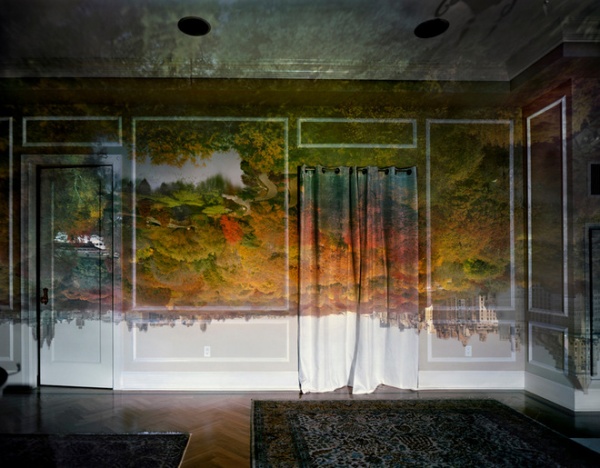
First, all the light in the room is blocked with opaque plastic taped to the windows and doors. Next, one small, strategic hole is cut in the plastic, allowing a small beam of light to enter the room. Then, through the opening, an image of, say, New York City’s Central Park (pictured) is projected upside-down on the wall and ceiling. If a camera’s handy you can take a photograph, like Morell did here, to capture the moment.
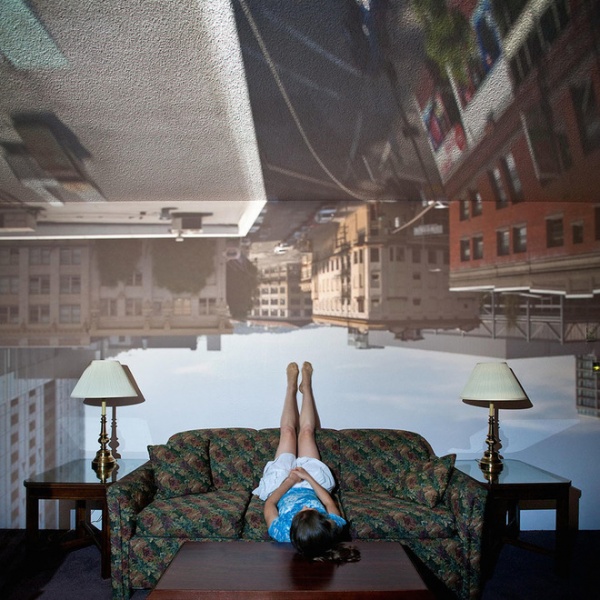
Taking clear, crisp images of a camera obscura image is difficult; the photographers have perfected a careful technique for capturing their shots. “Bright white walls are the best,” Kuzmickas says, adding that it’s key to choose a surface that is not overdecorated. He adds that, of course, “the outside should be interesting, too.”
After finding the appropriate opening, Kuzmickas sets his camera on a sturdy tripod and takes his long-exposure photographs. Some exposures can last up to 30 minutes, depending on the directness of the light. During that time, Kuzmickas says, the room “becomes really quiet” and “you don’t feel the madness of the city and its noises. It’s a very meditative process.”
Shown: Portland, Oregon
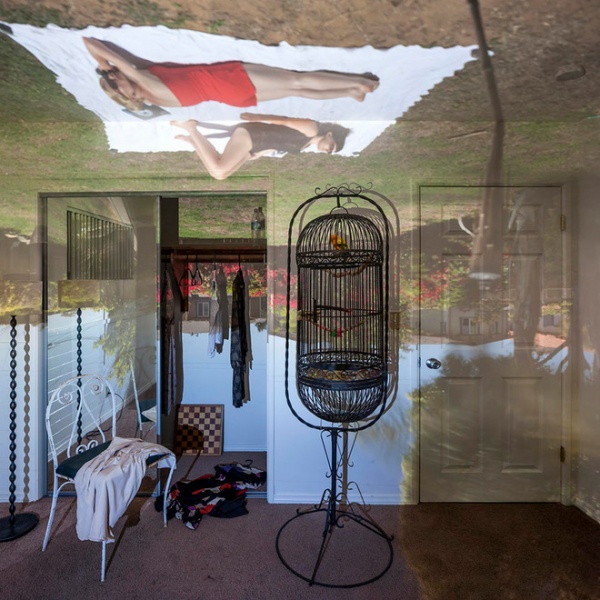
Kuzmickas, whose new work incorporates people into the projection (pictured), needs his models to remain still during the long exposure, so they do not appear blurred. This is why the models are usually lying down.
Given the time it takes to seal off the light, take a handful of long-exposure photos and do the final breakdown of the room, a single shoot can take an entire day. Along with doing the manual preparations, the photographers also have to plan for daylight, as the angle of the sun can affect the exposure. Generally speaking, Kuzmickas says, it is ideal to have the sun at a 45-degree angle to the window.
Shown: San Diego
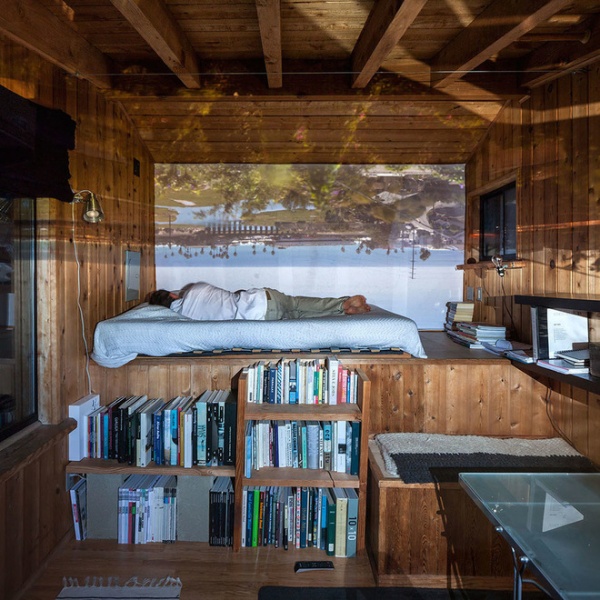
With everything in place, what is captured in the photos is a projection of the room’s outside view brought into the interior.
Although that projection is always there in the room, it is not always visible. It is only through the tedious effort of blocking out the majority of the light and filtering one stream of light through a small hole that one can see the outside projected on the interior.
Shown: Cardiff-by-the-Sea, California
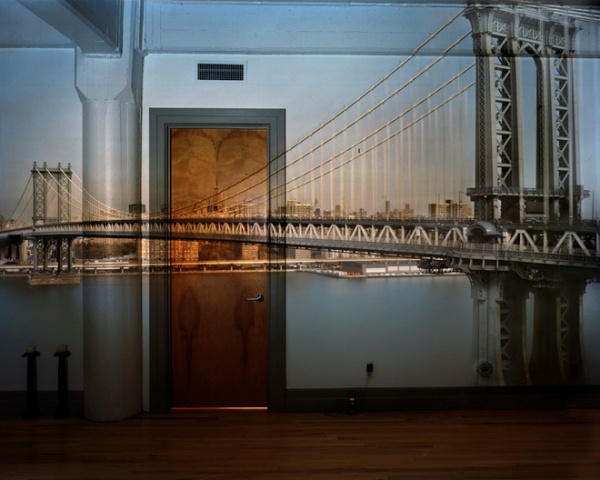
Morell began taking camera obscura photos in 1991, and his work has been featured in museums across the U.S., including the Museum of Modern Art, The Whitney, the Met, the Chicago Art Institute, and the San Francisco Museum of Modern Art.
He describes the process as “the weird and yet natural marriage of the inside and outside.” Despite the irony, he shies away from overanalyzing the images. He refers to them simply as “interiors” and says he is “not interested in the complexity that people bring to the reading of the image.”
Shown: Manhattan Bridge, New York City
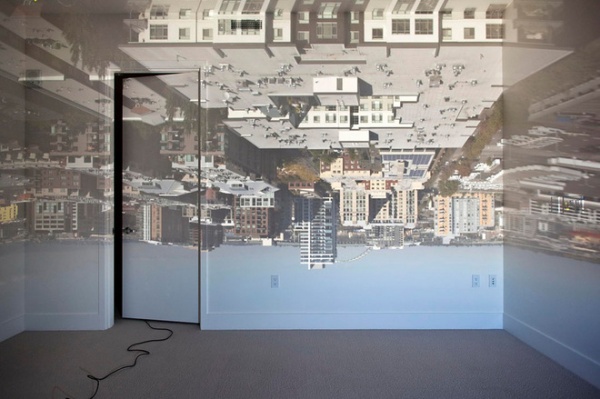
Kuzmickas — who also shoots architectural photography — describes the mystique of camera obscura as the combination of “the seclusion of a personal room with the rawness of the outside world,” which he says is something that is “frequently perceived as separate.”
It’s easy to see the view out the window, but it takes camera obscura to see that view as an addition to the interior of a room.
Shown: Portland, Oregon
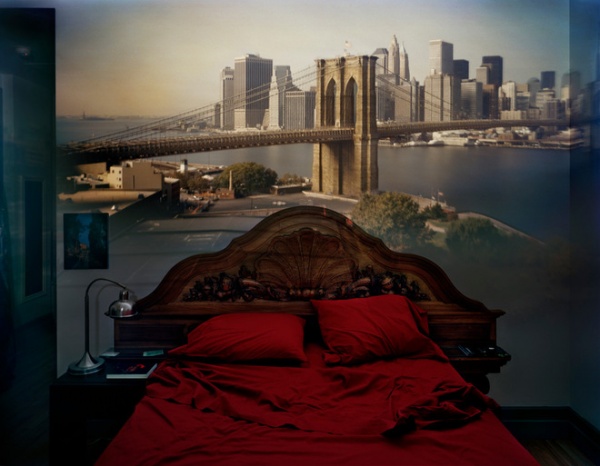
How to Create Your Own Camera Obscura
1. Pick a place with an interesting exterior view and, preferably, one window (the smaller it is, the less work it’ll be for you).
2. Check the ceiling and wall opposite the window. Kuzmickas recommends picking something that’s not overdecorated.
3. Consider the sunlight and the view. The general rule of thumb is that the more light, the better the result. An overcast day or a view that is in full shade won’t produce great results (partial shade is OK).
4. Block out all the light with opaque black plastic.
5. Create a small hole in the middle of the plastic covering the window. Give your eyes time to adjust, then expand the size of the opening as needed. Morell will sometimes place a lens over the opening to sharpen the image or will use a prism to invert the image (so it appears on the wall upright).
6. Use a digital or analog camera mounted on a tripod to capture the image. If you are shooting with film, Kuzmickas says “it will be hard to overexpose but easy to underexpose.” Digital, on the other hand, is less forgiving to overexposure. “The first shot will be the test,” Kuzmickas says. “Take it as a starting point, and you can go from there.” If you’re shooting digital, start with a shorter exposure, like a minute, check the result, then adjust accordingly.
7. Check the image, adjust your camera’s exposure settings and retake the shot until you are satisfied.
Shown: Brooklyn Bridge, New York City
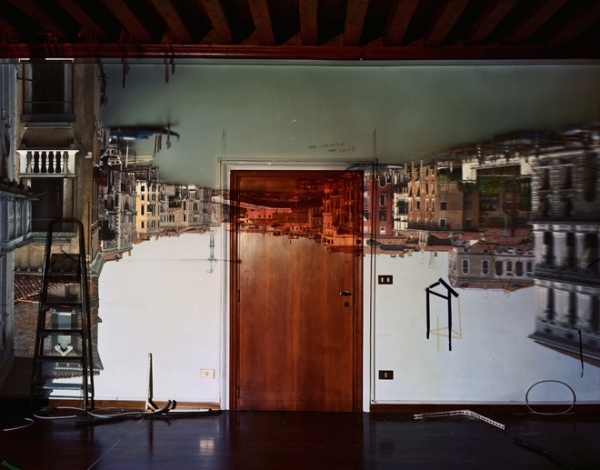
See more camera obscura photos: Darius Kuzmickas’ | Abelardo Morell’s
Shown: Venice, Italy
Related Articles Recommended












